The Key to Balancing Your Work Life and Your Personal Life

Work-life balance is a term that refers to the amount of time you spend at work and the amount of time you spend outside of work, such as in your personal life, with friends and family. It's important to consider how much time you want to devote to either one or the other so that it doesn't take away from those important relationships and activities. Let’s find the Key to Balancing Your Work Life and Your Personal Life.
We all want to live a balanced life, including time for our personal and professional lives. However, we might not know where to start when it comes to work-life balance. How much time do you need to spend at work, and how much time do you need for other activities?
Work is important, but it's also important to have balance in life. You can't do the same thing all the time, and a good work-life balance means that you're happy at work and home.
However, not everyone feels the same way about work-life balance. Some people might be happy to work all the time, while others may want to live a more balanced life between work and outside of work activities.
In both situations, your ultimate goal is to find balance. It's important to set goals and make plans for the future you want, not just for today. You can't focus on one area of your life without taking into account others either because you'll always be in conflict with yourself if you do.
A good work-life balance doesn't necessarily mean that you have a certain amount of time for work and a certain amount of time for other activities. It comes down to how well you can manage your time and energy, whatever that looks like for you.
The Key to Balancing Your Work Life and Your Personal Life
Work-life balance is an important but often elusive concept. What's the key to balancing your work life and your personal life, you ask? It all comes down to figuring out the most important thing in your life at any given moment. It may sound obvious, but the answer to this question can make the difference between a happy and successful life and one filled with regret. If work isn't as important as spending time with your family, then you may want to consider scaling back on how many hours you're putting in. If you don't ever want to see your kids, don't spend all of your time at the office.
Here are ways to balance your work life and personal life:
1. Prioritize what is important to you
What's more important - your career or your family? If your family is the top priority, it may make sense to scale back a bit on work and spend more time with your kids. You may be able to find a way to accomplish both by scheduling meetings so that you're not always in meetings from 9-5. And maybe, instead of spending every weekend at work, you'll be able to have dinner with your spouse and children on occasion. If work is your top priority, you need to be realistic about whether or not a job will allow you to have a happy and successful life.
2. Schedule time for your family and yourself
Find a way to schedule time for family and yourself if you have a busy schedule. Don't be afraid to go on vacation or take time off from work in order to spend more time with your kids. You don't have to be at the office every day. You don't have to feel like you're letting your family down by taking time off.
3. Listen to your intuition.
If you're feeling conflicted about whether you should spend time with your family or be at work, then trust yourself and stop and listen to what's going on inside of you. Your instincts are probably telling you something about what's important in your life right now. Trust your gut, and stop and figure out what it is trying to say to you.
4. The balance between work and play
It's okay to have a life outside of work as well. Don't be afraid to take some time for yourself, whether that means taking a walk outside or going to a yoga class after work. You're not being selfish for taking time for fun and relaxation. You deserve it!
5. Don't live your life based on comparisons.
If you find yourself comparing your life to other people's, then you may be setting yourself up for disappointment. No one's life is perfect. Even the most successful and wealthy people have their struggles. Don't let social media make you feel like your life isn't good enough if it doesn't look like someone else's.
6. Don't begrudge other people their happiness.
It's natural to compare yourself to others, especially when working. Don't begrudge a coworker or a boss that is there more than you are. If you're feeling resentment over the fact that someone has "more" time with the family or "less" time in the office, then it's time to take a step back and figure out what is important in your life right now.
7. Don't take things too personally.
If someone doesn't answer your e-mail or call you back, don't assume that it's because of something you did. Maybe they got caught up in a meeting, or their kid was sick, or any number of other things. You don't have to take these things so personally.
8. Be kind to yourself.
It can be easy to beat yourself up when you're not feeling like you're getting enough done at work or spending enough time with the family. Don't be so hard on yourself. You are doing the best that you can.
9. Don't compare your life to others.
You might look at someone else's work-life balance and think that they're doing it all right and that you're not doing enough. But their life isn't perfect either! Everyone has struggles. And what looks like a great work-life balance on social media might be hiding a messy house, a sick child, or a husband who works long hours. Don't let the perfect Instagram life make you feel like your life isn't good enough.
10. Don't think of your personal and work lives as having to be equal.
There will never be a day where you have the same amount of time between work and family or when your work is as important to you as home. Some days home will be more important, and some days work will be more important. You don't want one to take away from the other, but it won't always balance out 100%.
Why is it critical to balance work life with your one?
When you work non-stop and spend all your time with coworkers, you're not giving yourself a chance to refuel and be fully present for the people who are most important in your life. It's vital to take breaks from work to have time to recharge. If you don't, then your interpersonal relationships may suffer. Balancing work life with personal life is an important trait of a well-balanced person.
1. Your friends and family love you.
One of the most important things to remember is that the people in your personal life care about you and want to make sure that you are doing well. They want to spend time with you, either because they miss you when you're gone or because they want to make sure that everything is okay.
You might feel like it's not a big deal for them if you make plans with them on a weekend day and have to cancel. Or you might feel like it's not a big deal if you have to cancel a family get-together on short notice.
You have to realize that your loved ones think it is a big deal. They want to see you, but if you're not around, they will feel sad and lonely. They will miss out on opportunities to spend time with you. Even worse, they might think that something is going wrong in your life and try to help by asking what's happening or why you are pulling away from them.
2. You are a human being.
You are not a robot, and you should not act like one. You have feelings and emotions. These are supposed to be important to you, so whenever you insist that you're fine no matter what is going on with your life, then it's time for a reality check.
When you have feelings, it's very difficult to stay focused on something that doesn't matter to your heart. It doesn't help when you don't understand why they feel the way they do half the time.
3. You have a limited amount of time.
If you are feeling overwhelmed and need breaks, then it's a good thing to take a moment and ask yourself if it's just too much trouble to take some vacation time. If it is that much of an effort to reach out to your family and friends and ask them if they can make an effort to see you, then maybe it's time for a change.
4. Your relationships can be replenished.
It's a good idea to make time for yourself because otherwise, you will be drained of energy by the end of the week and have nothing left for your loved ones. However, when you take time to spend with family and friends, it's not an excuse to let your social life fall apart.
5. Sometimes it's been a bad day.
Sometimes things are stressful at work or big problems in your personal life. These are times when you might forget to make time for yourself or put in a good effort to reach out to the people that are important in your life. Maybe you can't get away with taking some time off, but that doesn't mean you can't call someone and tell them everything is going wrong.
6. You have feelings of guilt.
It's not unusual to feel guilty when you have taken time off from work or skipped out on your friends. Even if you haven't been on time making your weekly plans, it's a good idea to apologize because apologizing is the first step in repairing any damage you've done.
7. You were distracted
You can be so focused at work that all you think about is work and not about the people who are important to you. Being distracted is a bad thing. It erases all the good that has happened and puts everyone around the distraction in a bad mood for days on end.
Getting the Right Job for your Work-Life Balance
If you want to make sure you have a great work-life balance, you need to get the right job for yourself. It doesn't mean that you have to get a job that seems like this is perfect for you, but one in which there is enough opportunity for growth so that your interests have time and space to develop.
It's important to consider what sort of work-life balance you want in your career. If you want to work long hours, that's okay--but be sure to create a well-rounded schedule in order to maintain a healthy lifestyle. If you don't need a lot of money but are passionate about your work, then this is something worth considering.
And if you're unhappy with your job and need to make changes, take stock of what it is that makes you unhappy and consider moving toward a better working environment. Maybe you need a change of scenery or even a change of career.
Alternatives to Working Long Hours
If you're working all the time, try this one: start your day earlier and get to work earlier. If you aren't the type that likes to stay up late watching TV, then this may not work for you--but it's one way to have a plan for yourself so that you can get your tasks done in a reasonable amount of time. You could also put your work off until later in the day or try to get your work done in blocks throughout the day.
When you're doing a lot of work, it's important to take some time to wind down and relax. Stress is a major contributor to many physical problems as well as mental issues. Maintain a regular meal schedule; try to get exercise and sleep regularly, and socialize with friends.
Work-Life Balance Benefits Your Health
Research has shown that a lot of people who do not have a balanced life experience high-stress levels and have higher incidences of depression and high blood pressure. It can result in some pretty bad health issues for those who are not aware of it.
A lot of people choose to consume alcohol and other harmful substances in order to relieve stress. Some of these substances are illegal, such as cocaine. Examples of alcohol include wine, beer, and hard liquor. People under work-life imbalance can consume sedatives such as tranquilizers and antidepressants, prescription drugs, marijuana, and cocaine. In some cases, the drug will be legal the minute the user needs it--such as when they need to take off early from work due to a sick child or partner at home.
Another reason people who are not working in a proper balance experience unhealthy behavior is the stress caused by the imbalance. Stress can also cause some pretty unhealthy behavior such as smoking and being sedentary. An example would be to light up a cigarette so you can relax during your smoke break. Another example is to sit on the couch and watch TV rather than reading or exercising after getting home from work.
In order to keep yourself healthier, you should be mindful of what is causing the stress in the first place. If it is due to your job, you may want to consider following some of the steps below when managing work and family life.
Do you feel like you are struggling with putting "strategy" and "business growth concepts" in place that make a difference? Doing it all is overwhelming! Let’s have a honest discussion about your business and see if the Power of 10 can help you. Click “HERE” to have a great conversation with our team today.
Written and Published By The Strategic Advisor Board Team
C. 2017-2021 Strategic Advisor Board / M&C All Rights Reserved
www.strategicadvisorboard.com / info@strategicadvisorboard.com











